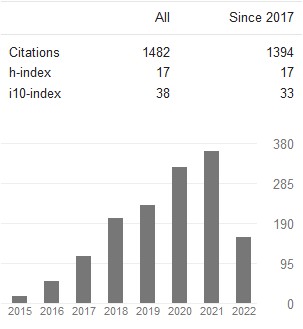Evaluation of Bisphenol A content in food contact PVC cling film
Abstract
Bisphenol A is commonly used as the plastic and metal material in the food and drink packaging industry and can be found in an abundant of material intended to come into contact with food such as polyvinyl chloride plastic film or stretch cling wrap. As Bisphenol A was classified as a substance of external origin with a detrimental effect on human health, it is aimed to evaluate the occurrence of Bisphenol A in food contact cling film. Twelve cling film samples from various countries along with six standard samples of Bisphenol A with different concentrations were evaluated. Bisphenol A was extracted from cling film and a small fraction of that was injected to GC–MS for quantitative analysis. Then, identification of Bisphenol A was carried out by GC-MS. GC Bisphenol A peaks were identified by comparison of their mass spectra with that of the Bisphenol A standard and with a spectrum. The Bisphenol A level among samples varies between 3.3 µg/L and 402.3 µg/L while, the daily intake of Bisphenol A ranges between 0.16 µg/kg and 20.1 µg/kg. Additionally, the average level of Bisphenol A concentration and daily intake were 81.46 µg/L and 4.072 µg/kg, respectively. Since the concentration of Bisphenol A varied in all the samples due to their countries produce cling film, it is required to establish a worldwide standard Bisphenol A limits specifically for food packaging cling films due to its importance and international trade as well.
Keywords:
Bisphenol A, cling film, food, packagingDownloads
Published
How to Cite
Issue
Section
Copyright (c) 2016 Hamidreza Pourzamani, Karim Ebrahim, Maryam Mirlohi, Nasrin Mirzaei, Ahmad Reza Bahrami, Ebrahim Rahimi, Bayan Saeidi, Majid Falahati, Bahram Nasr Esfahani, Hajieh Ghasemian Safaei

This work is licensed under a Creative Commons Attribution-NonCommercial-ShareAlike 4.0 International License.



 Journal of Innovations in Pharmaceutical and Biological Sciences is licensed under a Creative Commons Attribution-NonCommercial-ShareAlike 4.0 International License. Based on a work at
Journal of Innovations in Pharmaceutical and Biological Sciences is licensed under a Creative Commons Attribution-NonCommercial-ShareAlike 4.0 International License. Based on a work at